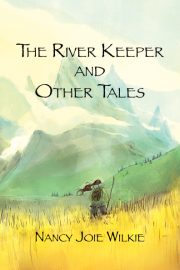An Approach for Shifting the Setting in an Alternate Retelling
By J.D. Harlock
Four years ago, I started writing speculative fiction professionally to modest success. I owe my entire career in the field to the inspiration I drew from Middle Eastern history, mythology, and literature. My personal favorites from my own writing are, in fact, retellings of classic stories, changed in one way or another to suit modern sensibilities. I most prefer to shift the setting of a well-worn plot to unfamiliar landscapes. Although shifting a setting can be tricky, I’ve developed an approach that I’ll now share with you.
How do I decide if a story is suited for a setting shift?
Plenty of stories in speculative fiction can be rewritten in a new setting without losing, or even adding, anything in the retelling. This is precisely why I’m always careful with which plot I choose for this process. I may succeed in shifting a setting, but that doesn’t mean that what I come up with is worth the time and effort to write out. It’s not uncommon for me to end up with a story that is essentially identical to the unaltered version and that I don’t feel represents the originality and ingenuity I like to display in the stories I have published.
For a story to be fit for a setting shift, I believe the new setting should:
- explore new themes that the original had not, or better yet, could not. Even if the narrative is virtually unchanged, a setting shift can explore ideas that either were overlooked at the time by the original author or wouldn’t have made sense in the original work. Often, this takes the form of differences in social mores in the cultures, but it could just as easily factor in anything that the setting shift introduces, such as a lack or abundance of resources, the hostility or tranquility of the political environment, and so on.
- explore new storytelling avenues that can breathe life into a tired premise, such as plot beats and characters that otherwise wouldn’t have worked in the original.
Now that I’ve figured out if a story is fit for a setting shift, how do I implement all the other narrative elements?
I often feel obligated to preserve elements of the story other than setting, although removing them may benefit the overall narrative. It took time, but I realized that sticking too closely to the source material wasn’t the right approach. I want all elements of my retelling to feel cohesive within the new environment. To get into the mentality needed for me to pull off these changes, I started to think of these retellings as my own original story, and I now approach them as I would any story I developed from scratch.
What to Keep In Mind
- Changing cultural contexts in setting shifts may lead to unfortunate implications, and sensitivity readers are critical to help navigate them. David Ayer’s Bright is essentially a rehash of Neil Blomkamp’s District 9, except that aliens have been replaced with standard urban fantasy stock characters. The bigotry experienced by the orcs is explicitly equated to the bigotry experienced by real-world American minorities. However, prejudice against the orcs stems from mistakes their ancestors committed, which introduces a host of unfortunate implications as American minorities were historically oppressed through no fault of their own.
- Certain character archetypes and plotlines don’t make sense in altered settings. Changes must be made to preserve the logic of the scenario, but such changes could just as easily break the entire narrative. The film Avatar essentially retells the same “going native” plot we’ve seen multiple times in narratives set in real-world history, with the greedy colonialist archetype going after a resource: unobtanium. However, within the world of Avatar, Earth is now near uninhabitable and unobtainium is essential to humanity’s survival. The colonizers aren’t acting solely out of malice or delusion, and a more nuanced take on that archetype would have improved the plot’s cohesion.
Steps to Shift the Setting
This is the six-step process I’ve developed for retellings that include scene shifting:
- Locate stories that are firmly in the public domain.
I don’t want to overstep boundaries and try to shift the setting of a story under copyright. Not just because of the legal issues associated, but because I don’t want the author I’m inspired by to feel exploited by my reinterpretation of their story. - Research the sociocultural context driving the original narrative.
Not only is this the most challenging and time-consuming part of the process, but it’s also the most integral. Diving into the research and viewing it as a learning experience makes it feel less like I’m taking up too much time on what could be a dead-end and instead turns it into a chance to understand the works that I love on a deeper level.
- Boil the narrative down to essential thematic and narrative elements.
This is the most elusive part of the process for me because what I consider essential to the plot is likely different from what the author intended. Regardless, since my story is meant to stand on its own, my interpretation of what is essential to it, through my own ability to justify the changes, will ultimately lead to a better take. - Choose a setting that meshes with the retelling’s purpose.
If it’s a real-world location, extensive research is integral to picking the new setting. If it’s a fictional locale, then the worldbuilding needs to maintain the logic that the sociocultural context introduced. - Craft characters that make sense in this new context.
Consider whether the original character dynamics still work in the new setting, and if they do not, then different dynamics must be introduced to compensate for how the change in setting, and subsequent change in character dynamics, affects the narrative. - Take everything I’ve managed to pull off so far and weave the narrative for the setting shift.
In other words, it’s time to start writing! I hope that with these steps and considerations for shifting the setting, you’ll produce fantastic retellings of works that connect with us all.
 In addition to their posts at Wasafiri, as an editor-at-large, and at Solarpunk Magazine, as a poetry editor, J.D. Harlock’s writing has been featured in Strange Horizons, Star*Line, and the SFWA Blog. You can find them on Twitter, Threads, & Instagram @JD_Harlock.
In addition to their posts at Wasafiri, as an editor-at-large, and at Solarpunk Magazine, as a poetry editor, J.D. Harlock’s writing has been featured in Strange Horizons, Star*Line, and the SFWA Blog. You can find them on Twitter, Threads, & Instagram @JD_Harlock.


